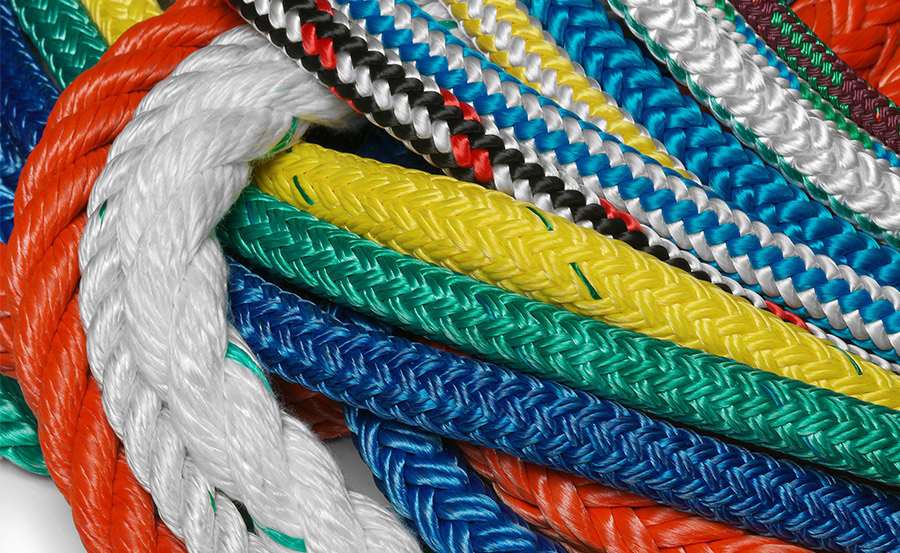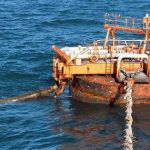Rope makers seem to delight in confusing us with science and/or extraordinary polysyllabic names. Let me try to cut through the guff a little.
Polyester
Also known as Terylene or Dacron, polyester is the stuff from which most “ordinary” rope and line is made of. It is resistant to rot and ultra-violet (UV), sinks in water and comes in a variety of constructions:
· 3-strand pre-stretched – can be spliced in the normal fashion, though it is a good idea to use 4 or 5 tucks instead of the 3 used in natural fibre ropes. The “pre-stretch” refers to an extra tweak imparted during the making of the rope which makes it more suitable for halyards and bell ropes. Very important, that – could you imagine the cacophony which would result from using stretchy rope? The snag with this construction is that it can kink, so it’s unusual to use it as a sheet.
· Plaited pre-stretched – comes in all sizes from 1mm upwards but is not usually used much above 8mm where braided rope (see below) takes over. This is well behaved, and finds use as lacing, messengers etc. in the smaller sizes, and halyards in the larger. But it can’t be readily spliced – so you knot or seize it.
· Braided rope – this is the stuff most widely used for sheets. Available in a variety of constructions and outer finishes, it starts at about 5mm. The kind we list is matt finish braid outer on braid core. It is spliceable – with some practice – but each manufacturer uses a slightly different construction, so you need to follow the instructions appropriate to that rope.
Polypropylene
Slightly more stretchy than polyester, polypropylene floats in water, and will over time degrade under UV. It tends to come in 3-strand form – except ski/rescue ropes which are braided – and the main variation is the way in which the material is incorporated into the rope. I don’t pretend to understand the minutiae of the process, but can give some feel for the results:
· Staple spun polyprop – the hairy cheap stuff you can get in blue, orange or white, and which is seen on farms, fishing boats and building sites. Except for moorings, not often seen on yachts.
· Mono/Multifilament polyprop – deceptively like polyester, but it does – as mentioned above – degrade over time and can melt if surged round a mooring post. How to tell one from the other? Chuck it into the water – holding onto one end! If it floats it’s polyprop. It’s not a bad rope, but be aware of its limitations, and keep looking for the brittleness which develops with age – a bit like splinters that appear on the outer fibres.
· Hemp-style ropes – these are now cheaper than the natural ropes they replace and are better behaved and longer lasting. They come in a soft finish, which looks well when new, but is rather stretchy, not particularly long-lived, but more comfortable for sheets. The harder finished varieties – for example “Leoflex” or “Spunflex” – look a bit shiny when new, but last longer – typically 10-15 years, stretch much less, and are cheaper. Visitors here can see it used on our flagpole(!) – currently 6 years old and showing no sign of degradation.
Nylon
Nylon is very stretchy, and so used for anchor ropes and towing lines. Its stretchiness makes it very good at storing energy, but if it breaks that energy is released extremely quickly. I have seen a 2” nylon hawser part – and as it snaked up the side deck of a mine-sweeper it put two men in hospital and wrecked guard-rails, an inflatable boat and a host of minor fittings. I’m not sure I love the stuff.
Hemp, sisal, coir, manila
Natural fibre ropes used to be the choice of impoverished sailors, but so little is made that it is now more expensive. It is hard, therefore, to justify its use except for decorative purposes or for fenders where coir is still useful. Even so, most of what we sell ends up as handrails or garden swings. Sic transit gloria mundi.


